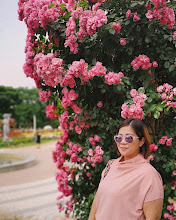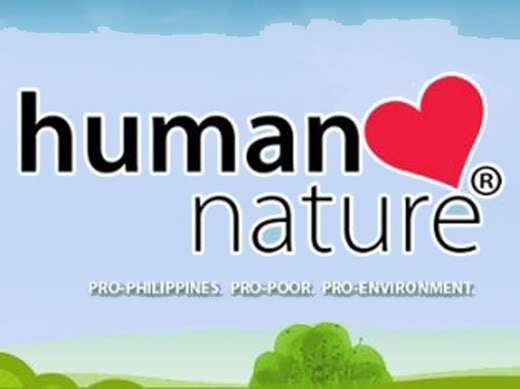Like most travelers, one of my travel goals is to visit as many
UNESCO World Heritage sites as possible. I've been to two locations here in the Philippines - the Baroque Churches and Vigan City, and two in South Korea -
Changdeokgung Palace and
Jongmyo Shrine.
On our last
Seoul Searching trip, I was able to tick another one off my list after having visited the
Royal Tombs of the Joseon Dynasty.
 |
The Royal Tombs of the Joseon Dynasty
- another UNESCO World Heritage Site off the bucket list! |
A collection of 40 tombs scattered over 18 locations across South Korea, the
Royal Tombs are magnificent and perfectly preserved graves entombed with kings and queens, as well as monarchs that were posthumously granted the title of king or queen, of the Joseon Dynasty. These tombs were built over five centuries ago - from 1408 to 1966 - and were designated as a
UNESCO World Heritage Site in
2009.
More of the Royal Tombs after the jump!
Seoul is home to twelve of these Royal Tombs, and Yue and I had the chance to visit the Seonjeongneung tombs located in Gangnam.
Seonjeongneung is the name of
Seolleung and
Jeongneung combined, and it refers to the royal tombs of
King Seongjong (the 9th king of the Joseon Dynasty),
Queen Jeonghyeon (the second wife of King Seongjong) and
King Jungjong (a son of the two).
 |
| Admission rates: 1000 won for adults, 500 won for kids. |
Seolleung, the tomb of King Seongjong
(reigned 1469-1494) was built in 1495; subsequently, the tomb of Queen Jeonghyeon
(1462-1530) was built on the east side of Seolleung in 1530.
 |
| Seolleung, the tomb of King Seongjong. |
 |
| The tomb, as seen from another angle. |
 |
| Stone carvings in the shapes of officials, warriors, and animals lined up before the tomb. |
 |
| The tomb of Queen Jeonghyeon. |
 |
| A closer look at the queen's tomb. |
Jeongneung, on the other hand, was built in 1544.
King Jungjong (reigned 1506-1544) was originally buried in the royal tomb in Wondang, Goyang-gun, Gyeonggi-do, next to this second wife, but his remains were moved to this current location in 1562 upon the order of his third wife,
Queen Munjeong (1501 - 1565).
 |
| Jeongneung, the tomb of King Jungjong. |
The Royal Tombs were built in places of stunning natural beauty, with the back side of the tombs protected by a hill as they face south toward water and, ideally, with mountain ridges visible in the distance.
 |
| Walking in the woods on a summer afternoon. |
 |
| Locals enjoying the scenery, too. |
Seonjeongneung is no exception, and this place is quite popular for its serene and enchanting promenades. Locals who live or work nearby often visit this place to relax and enjoy the scenery, or go for a leisurely stroll.
As we explored the area, we noticed several other structures aside from the burial mounds. Apparently, these buildings are also associated with the Royal Tombs. Think of it as an 'entourage' leading to the burial mound itself.
 |
| The red-spiked gate also known as the Hongsalmun. |
A royal tomb is divided into three sections: the
Entrance Area that represents the earthly world (
Jaesil, pond, Geumcheongyo Bridge); the
Jehyang Area where the living would hold memorial services for the dead (
Hongsalmun Gate, Jeongjagak Shrine, Subokbang); and the
Sacred Area dedicated to the dead (
Bigak, the Neungchim area where a body is buried).
Geumcheongyo Bridge connects the earthly world with the sacred area. Across the bridge is the red-colored Hongsalmun Gate, the entrance to the sacred burial site, which leads to
Chamdo.
 |
The Chamdo, or Incense Road. The elevated path should not be walked on -
this walkway is believed to be the path were dead kings tread. |
Chamdo consists of two paths. The
Divine Path was believed to be used by dead kings, while the
Royal Path, by living kings.
 |
| The Jeongjagak Shrine at King Jungjong's tomb. |
 |
| The Jeongjagak Shrine at King Seongjong's tomb. |
The Jeongjagak is a shrine where memorial services are held. To its left is the Suragan, or the Royal Kitchen, where food for the memorial services are prepared. And to its right is the Subokbang, which serves as the living quarter of the officer guarding the tomb.
 |
| The Suragan at King Seongjong's tomb. |
 |
| Yue looking on. :) |
 |
| The Subokbang, or the guard house. |
Although the area beyond the Jeonjagak Shrine is restricted to the public, visitors can go near the Bigak and even take pictures of it. The
Bigak is a small building which houses the stele, or the stone monument that has the names of the king and the queen written on it. At the back of the stele, you can find a written list of the king's accomplishments.
 |
| The Bigak at King Jungjong's tomb. |
 |
| The stele of King Jungjong. |
Another area that's open to the public is the
Jaesil, or the '
house of purification'. This serves as a temporary residence for those who will partake in the ancestral rites. Participants, or those who will preside in the ritual, need to stay at the Jaesil to '
purify' their minds and bodies a few days before the date of the ancestral rite.
 |
| Taking a break at the Jaesil. |
A Jaesil typically consists of an incense storage, a storage for ritual objects, a kitchen, and servants' quarters.
 |
| Another building inside the Jaesil. |
Near the Jaesil is the Seonjeungneung History Center where you can learn more about the Royal Tombs and the kings and queen entombed here. You can also get small souvenir items here.
 |
| Postcards for souvenirs. |
To get to Seonjeongneung, take the subway to
Seonjeongneung Station,
Line 9 Exit 3 or
Seolleung Station,
Line 2 Exit 8. I recommend taking the first route, because it will only take two or three minutes on foot to get to the Royal Tombs.
112-2 Samseong-dong, Gangnam-gu, Seoul
+82-(0)2-566-6300









































15 replies:
I've never been to UNESCO World Heritage sites. But in my bucket list there are few sites. These royal tombs looks amazing. Thanks for sharing your experience with us
I've never been to Seoul before, but it looks so great! I would love to check it out for myself one day.
Wow this is a beautiful place and great photos too. Looks like this little kid had fun :)
UNESCO heritage sites teach us many things. I love visiting them. Well never been to Seoul though, hope can make it one day.
What an interesting place to explore, and to see the royal tombs. It would be neat to explore the city like this.
I never thought searching royal tombs can be as exciting like yours. I don't think it will be applicable here in the Philippines though, or maybe not, I am thinking maybe searching popular generals in Libingan ng mga Bayani? :-)
I’ve been to Seoul a few times for work but never got the chance to explore. This is helpful cause I’m going there soon for a family trip
I am going to visit Korea in September and I can't wait! It's been a really long time. Seems like you had a great time!
Your overviewof this place are so thorough and they give so much good infomation. I will def have to add this to my list
So gorgeous. I would love to visit, it looks amazing! I love learning history of different places!
I love to learn different histories of places. It's so good to add it to our knowledges, this place looks amazing..!
It looks amazing there! So beautiful place to visit with lot of history x
Laura
https://pinkfrenzymissl.blogspot.com/
This is almost like a history lesson, very informative. Love learning about new places and their history.
I love learning new thing about different places. I love reading them and I also love the feeling of wanting to visit that place after reading it.
These historical places are truly beautiful and amazing, I love exploring places like this.
Post a Comment